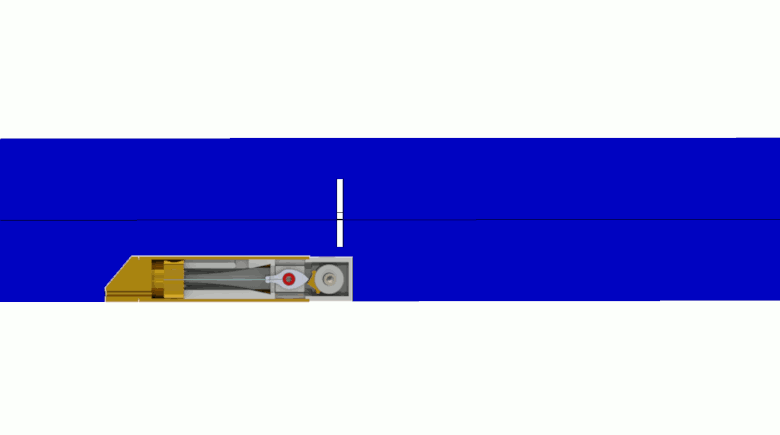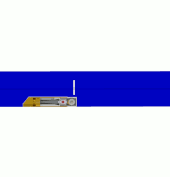
Contemporary cardiac implantable electronic devices such as pacemakers or event recorders are powered by primary batteries. Device replacement due to battery depletion may cause complications and is costly. To overcome these limitations, a new energy harvesting device has been investigated to power the implant with energy from intra-corporeal power sources such as vibrations and blood flow. By replacing primary batteries with energy harvesters, re-interventions can be avoided and the size of the total device might be reduced. This paper introduces a device with a lever which is deflected by the blood stream within the right ventricular outflow tract (RVOT) of the heart, an attractive site for cardiac pacing. The resulting torque is converted to electrical energy by an electromagnetic mechanism. The blood flow harvester weighs 6.4 g and takes up a volume of 2 cm3, making the harvester small enough for catheter-based implantation. It was tested in an experimental setup mimicking flow conditions in the RVOT. The blood flow harvester generated a mean power of 14.39 ± 8.38 µW at 60 bpm (1 Hz) and up to 82.64 ± 17.14 µW at 200 bpm (3.33 Hz) during bench experiments at 1 m/s peak flow velocity. A simulation of blood flow over the harvester was conducted to compare peak shear stresses to the Tillmann threshold. The analysis showed that the peak shear stresses caused by the harvester are well below the Tillmann threshold and should therefore not cause relevant blood trauma. The harvester generates sufficient power to drive a modern pacemaker in a size and weight that is comparable to contemporary leadless pacemakers. Therefore, it presents a viable method to power batteryless and leadless cardiac pacemakers.

